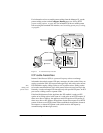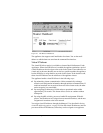
Appendix A Caching Solutions and Performance 141
Two types of clusters are supported: soft clusters and management-only clusters.
A soft cluster consists of multiple appliances that use an external clustering
device such as an L4 Switch or router to handle load balancing and routing
responsibilities. A management-only cluster also consists of multiple appliances
whose functions are managed through a proprietary communications protocol
accessible through the Manager UI. A management-only cluster does not use an
external clustering device.
For more information about clustering, see Clustering‚ on page 144.
Transparency
The Intel NetStructure Cache Appliance can transparently intercept NNTP traffic
bound for a well known NNTP server. By transparently intercepting, caching,
and serving the NNTP data from a centralized parent news server, the appliance
simplifies migration and administration while both increasing responsiveness and
decreasing network use.
Posting
The Intel NetStructure Cache Appliance sends user article postings to the parent
news server. You can specify the parent news server that receives postings for a
particular group or set of groups from the command-line interface. For
procedural information, see Configuring NNTP servers‚ on page 65. When acting
as the news server (accepting article feeds), the appliance accepts postings.
With background posting, the appliance queues posted articles until the posting
news server can accept the posted article.
Maintaining the cache: updates and feeds
The Intel NetStructure Cache Appliance can maintain the freshness of its cache
by:
✔ Updating its cache on demand
✔ Actively retrieving (pulling) updates at configured intervals
✔ Accepting news feeds
You can configure the following options from both the Manager UI and the
command-line interface:
Pull the overview information for specified groups:
For all groups designated as pullover, the server will retrieve the overview
database information (using the OVER/XOVER commands) automatically and
periodically. Pulling overview information can be useful for high volume
groups that are frequently read but from which only a subset of the articles
are accessed.


















